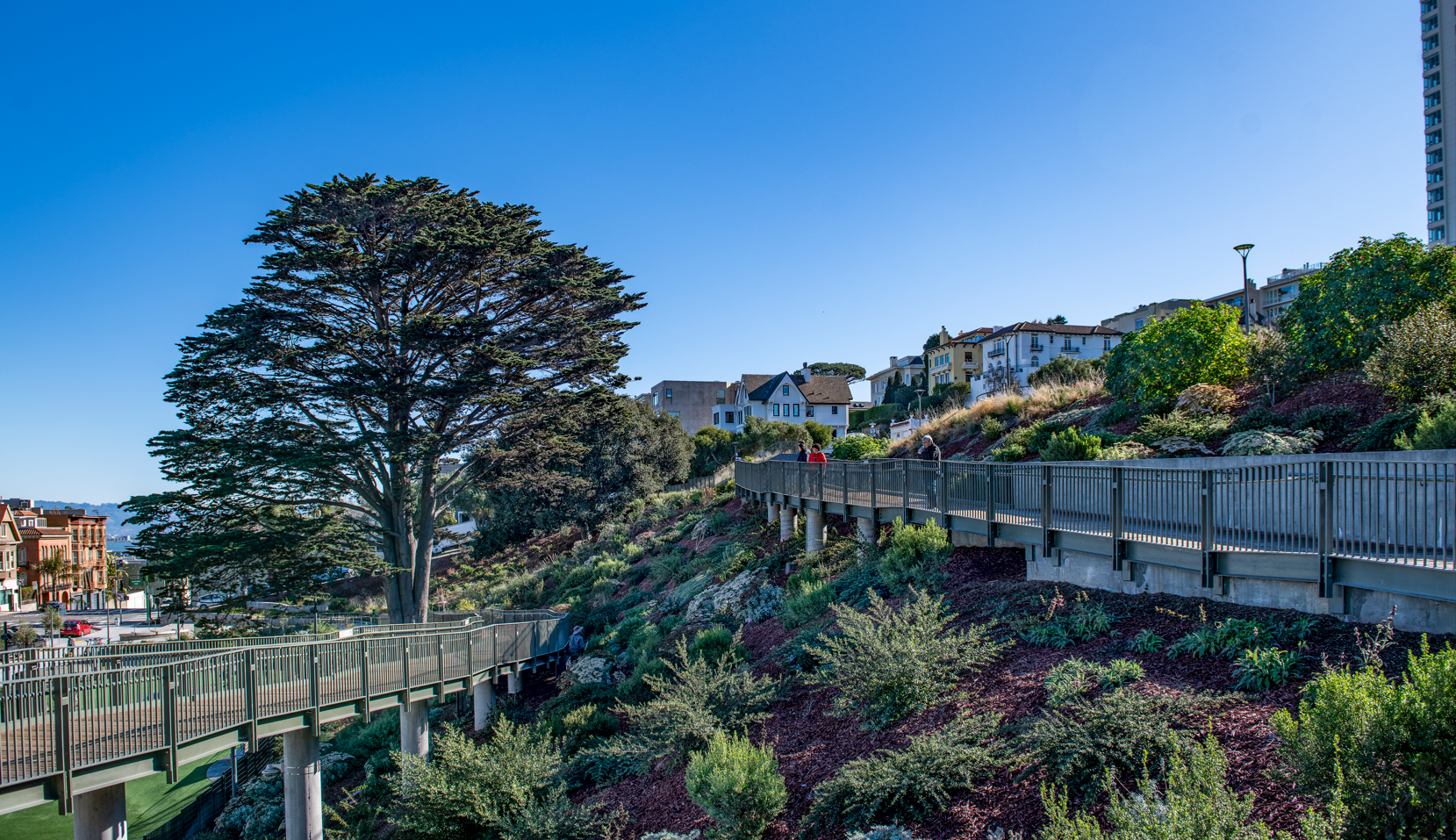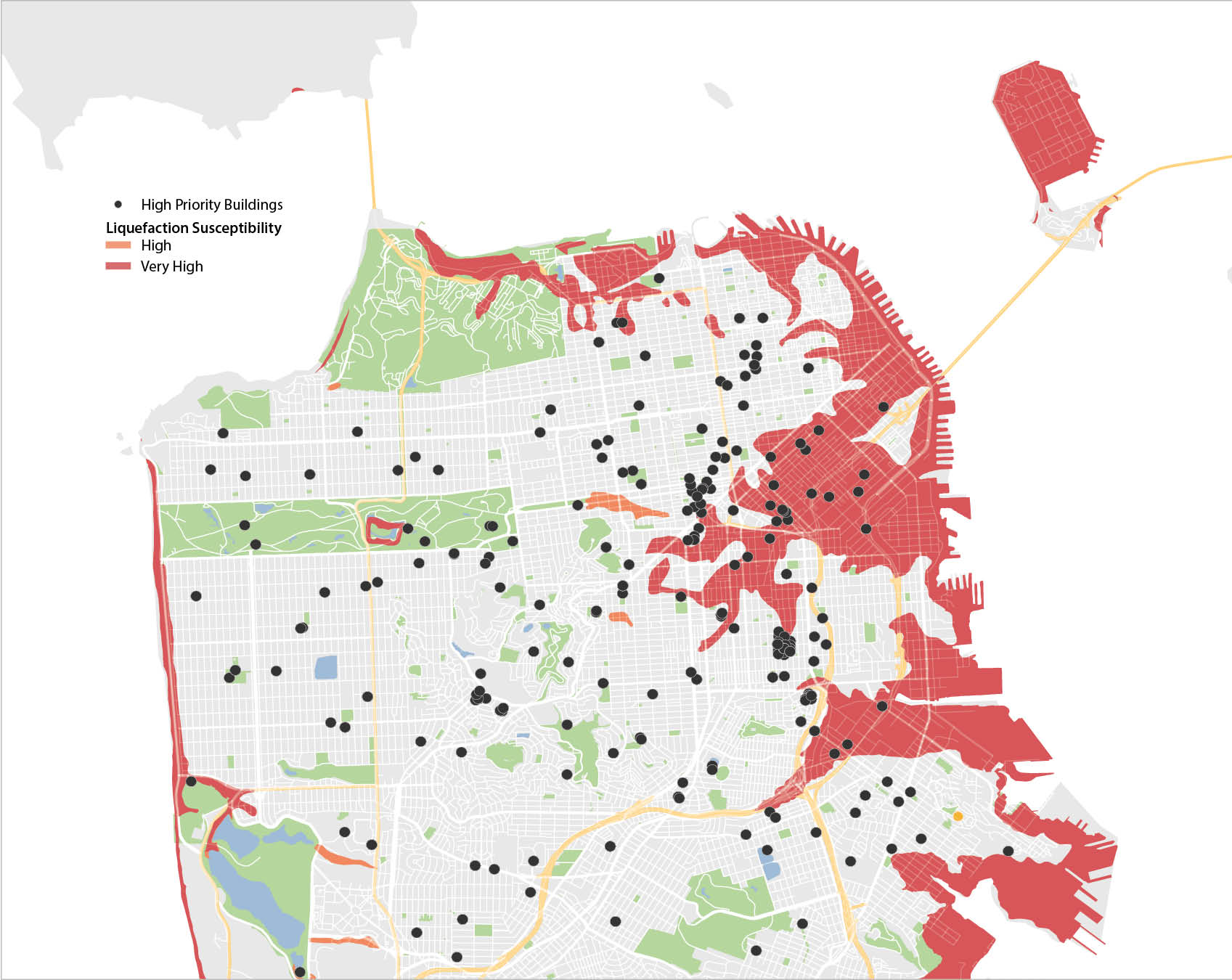Because the risk of a major earthquake is imminent and the potential damage significant, the City is constantly working to protect its residents, workers, and buildings from seismic risks. These efforts are primarily carried out through San Francisco’s Earthquake Safety Implementation Program (ESIP). ESIP is a comprehensive 30-year, 50-task plan that grew out of the Community Action Plan for Seismic Safety (CAPSS) to address the City’s most pressing seismic risks. Priority earthquake resilience projects currently underway include the Concrete Building Safety Program and seismic retrofits for municipal and utility owned buildings and infrastructure.
A rising priority for both public and private buildings is addressing vulnerable concrete buildings. There are approximately 3,700 publicly and privately owned older concrete buildings that were constructed before modern City building codes; some of which have the potential to fail and collapse in an earthquake. The Office of Resilience and Capital Planning (ORCP) convened a Concrete Building Safety Working Group to provide community and stakeholder input into the development of this important retrofit program. The Working Group first convened in Fall 2022 and is expected to complete its work with the introduction of legislation to the Board of Supervisors in early 2024.
ORCP is also making efforts to address critical infrastructure vulnerable to failure in an earthquake. This includes the use of the HAZUS Earthquake Loss Estimation Study and Seismic Hazard Ratings. The HAZUS Earthquake Loss Estimation Study is a standardized analysis developed by FEMA to estimate the physical and economic impacts for specific earthquake scenarios. San Francisco is the first known municipality to have applied the HAZUS methodology at the individual building level, run first in 2013 and updated in 2017. The results help the City quantify the economic benefits of seismic retrofit projects from avoided structural damage, content damage, or the operational loss of the services performed in a building.
Seismic Hazard Ratings (SHRs) were first developed in San Francisco in 1992 and are used to assess risk and prioritize seismic-strengthening capital improvements for over 200 public buildings. Buildings are rated on a scale from one (best) to four (worst). At present, the City has addressed nearly all of the buildings previously identified as SHR4, with the exceptions of 101 Grove Street and 170 Otis, and many of those buildings rated SHR3. Other priority retrofits of City-owned facilities that are incorporated into the Plan include Kezar Pavilion, the homeless shelter at 1001 Polk Street, Mission Cultural Center for Latino Arts, San Francisco African American Cultural Center, the Chinatown Public Health Center, Zuckerberg San Francisco General Hospital Building 5, and Laguna Honda Hospital M and O wings. Updating the ratings is important for the future prioritization of seismically vulnerable structures.
|
2017 SF HAZUS Results (Dollars in Millions) |
Hayward M6.9 |
San Andreas M6.5 |
San Andreas M7.2 |
San Andreas M7.9 |
|||||
|---|---|---|---|---|---|---|---|---|---|
|
Structural Damage |
107.2 |
133.4 |
212.3 |
353.1 |
|||||
|
Non-Structural Damage |
398.3 |
545.4 |
859.7 |
1,489.3 |
|||||
|
Subtotal, Building Damage |
505.5 |
678.8 |
1,072.0 |
1,842.4 |
|||||
|
|
|||||||||
|
Content Damage |
130.1 |
426.7 |
523.6 |
714.3 |
|||||
|
Operational Losses (Rent, Relocation, and Lost Income) |
154.8 |
191.9 |
314.7 |
527.2 |
|||||
|
Total Economic Impact (239 Buildings) |
790.4 |
1,297.3 |
1,910.3 |
3,083.8 |
|||||
Earthquakes can also interrupt the provision of “lifeline” services like electricity, fuel, and water. Since 2009, ORCP has convened the Lifelines Council, a committee of public and private infrastructure providers who meet quarterly to share information and collaborate on seismic resilience initiatives. In 2020, this Council released the Lifelines Restoration Performance Improvement Plan, a report that assesses system interdependencies and makes recommendations about how lifeline access can be more quickly restored after a major disaster. ORCP is following up with infrastructure providers to understand how the recommendations are being implemented and any new emerging priorities.
Finally, several other key infrastructure improvement projects in progress will guard against earthquakes. This includes seismic retrofit work for the Embarcadero Seawall mentioned
above; important Muni and SFPUC facilities; Islais Creek Bridge, and the Emergency Firefighting Water System. For more information, please see the Transportation chapter, Infrastructure and Streets chapter, and Public Safety chapter.



